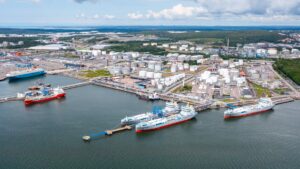
Canada´s Minister of Transport, Omar Alghabra, has announced an investment of up to $38 million under the National Trade Corridors Fund to improve cargo movement at the Port of Argentia.
The Minister of Transport, Omar Alghabra, said this project will expand the existing Fleet Dock terminal.
This development comprises the building of roughly 460 metres of berthing space for three new berths to handle large vessels, a Ro-Ro ramp to enable container and freight transportation, and an increase in accessible dockside area of around 100,000 metres.
The project at the Port of Argentia will also encourage environmentally sustainable practices such as the use of green energy and low-carbon fuels.
The port of Argentia considers these improvements vital as it will allow the port to accommodate increased trade, improve operations, and increase economic growth in the region. The project is anticipated to more than quadruple trade volumes moving through the port over a 30-year horizon.
“This project will strengthen our supply chain, making the flow of goods to and from Canada more efficient. Through this investment, the Port of Argentia will be able to handle greater trade volumes and enhance its operations. The project will also contribute to regional economic growth and sustainable business opportunities in Newfoundland and Labrador,” Omar Alghabra noted.
Through the National Trade Corridors Fund, the government of Canada is investing to help goods move smoothly throughout Canada’s supply chains.
The fund is a competitive, merit-based program designed to help infrastructure owners and users invest in the critical transportation assets that support economic activity in Canada. A total of $4.6 billion over 11 years (2017-2028) has been allocated to the program.
Genny Picco, chairperson of Port Argentia highlighted the fact that “this facility will allow Argentia access to global projects and provide significant spin off opportunities to local, regional, provincial, and national economy.”


